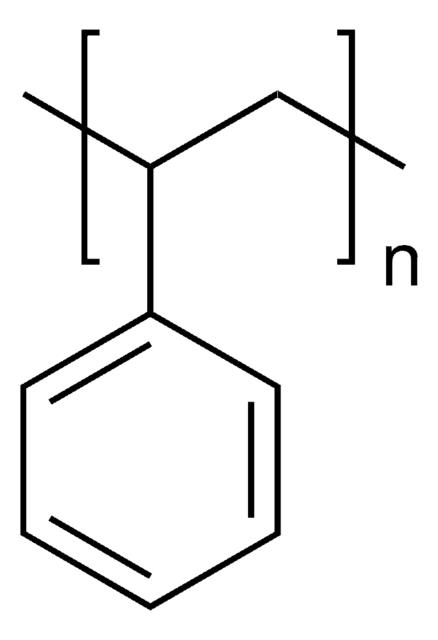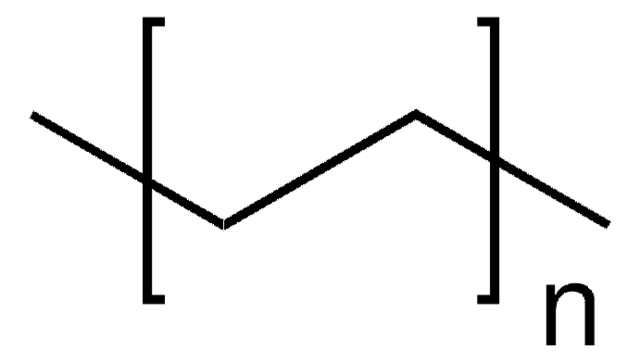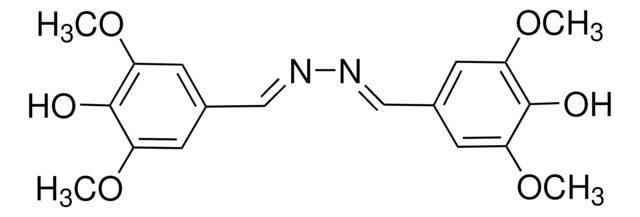182427
Polystyrene
average Mw ~280,000 by GPC
Synonym(s):
PS
About This Item
Recommended Products
form
beads or pellets
Quality Level
mol wt
average Mw ~280,000 by GPC
refractive index
n20/D 1.5916
transition temp
Tg 100 °C
density
1.047 g/mL at 25 °C
SMILES string
c1(ccccc1)C=C
InChI
1S/C8H8/c1-2-8-6-4-3-5-7-8/h2-7H,1H2
InChI key
PPBRXRYQALVLMV-UHFFFAOYSA-N
Looking for similar products? Visit Product Comparison Guide
Related Categories
General description
Application
Polystyrene can be used as a precursor to prepare graphene film and 3D graphene sponges by pyrolysis under argon atmosphere. The filmogenic property of polystyrene can be exploited to prepare 3D graphene sponges with uniform pore sizes.
It can also be used to prepare dyed polystyrene (PS) film for routine dosimetry in radiation processing. Dyed PS film has high post-irradiation stability.
Storage Class Code
11 - Combustible Solids
WGK
WGK 3
Flash Point(F)
Not applicable
Flash Point(C)
Not applicable
Personal Protective Equipment
Regulatory Listings
Regulatory Listings are mainly provided for chemical products. Only limited information can be provided here for non-chemical products. No entry means none of the components are listed. It is the user’s obligation to ensure the safe and legal use of the product.
JAN Code
182427-500G:
182427-25G:
182427-1KG:
182427-BULK:
182427-VAR:
Choose from one of the most recent versions:
Already Own This Product?
Find documentation for the products that you have recently purchased in the Document Library.
Customers Also Viewed
Global Trade Item Number
| SKU | GTIN |
|---|---|
| S34860-1EA | |
| 182427-1KG | 4061837909641 |
| 182427-25G | 4061838755797 |
| 182427-500G | 4061838755803 |
Our team of scientists has experience in all areas of research including Life Science, Material Science, Chemical Synthesis, Chromatography, Analytical and many others.
Contact Technical Service




